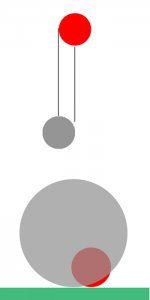I've only watched it once, however I think there is a whole lot that is missing in the explanations. Stan talks about two lines, one being the center of the cue ball to the edge of the object ball, and the other being the center of the object ball to the edge of the cue ball. He then talks about points A, B, C. However nowhere does he tell you when you address the cue ball which aiming line you line up against? You have two parallel lines, three points on the object ball, but no clear explanation on which one to aim for. Maybe I need to watch this again, but from what I watched I was very confused....
-Pip
First line - center of cb to edge of ob << u are correct
Second line - edge of the cb to to the ABC reference points << u have to figure out this
exception to the second line rule is 1/8 overlap line on the cb an ob
Im thinking you need to really pay attention when u watch the dvd and watch it many times! is my opinion

